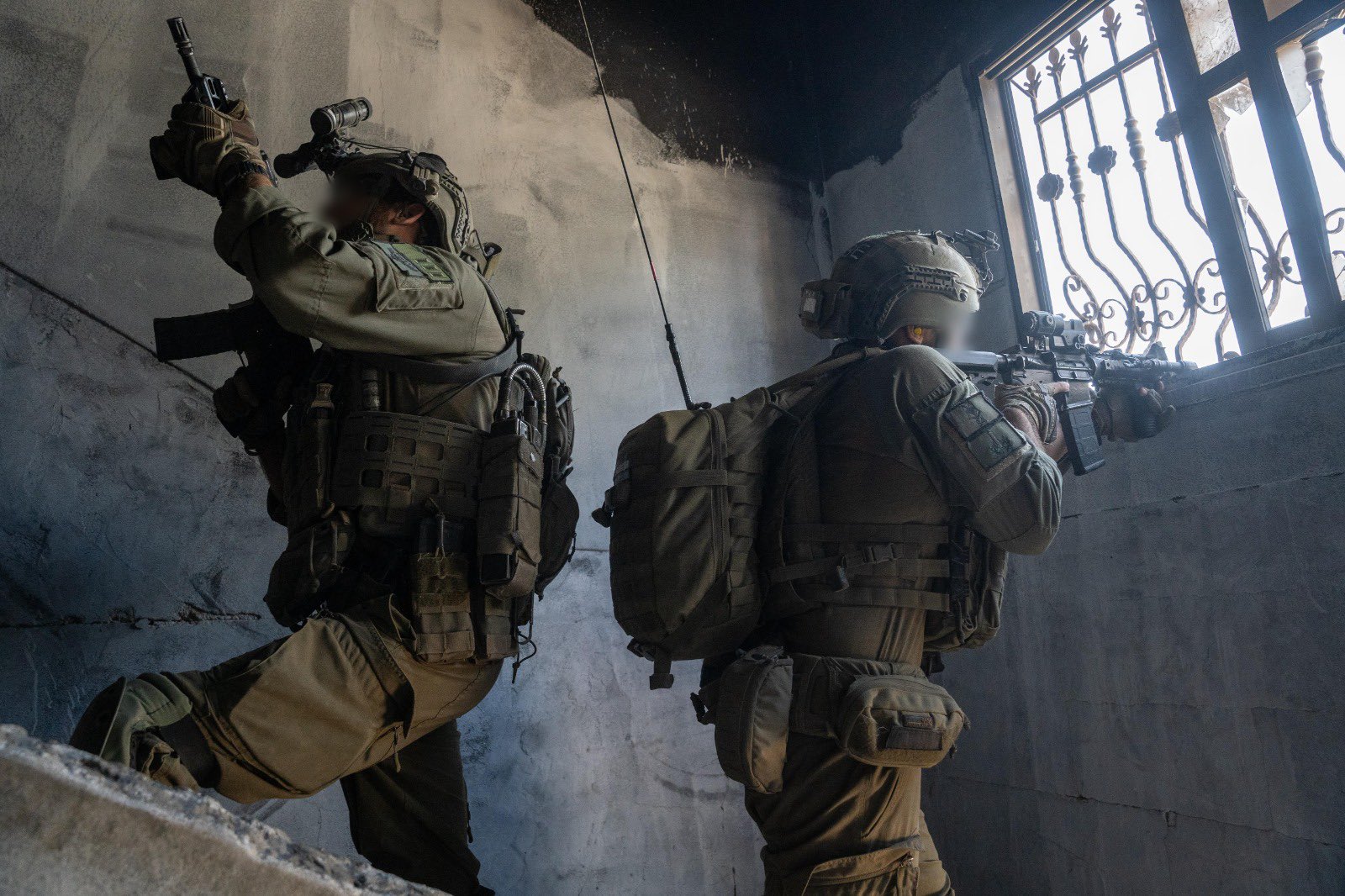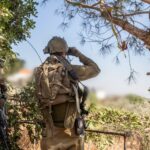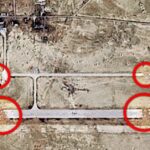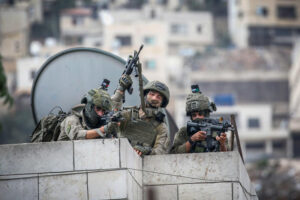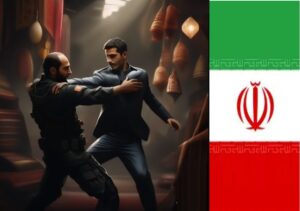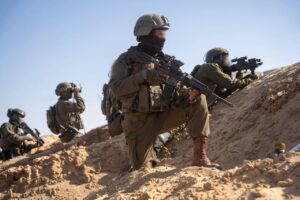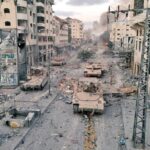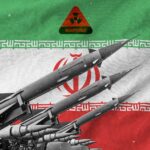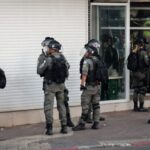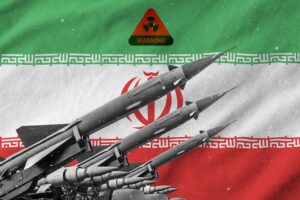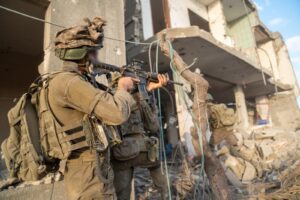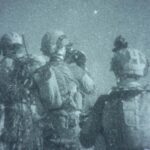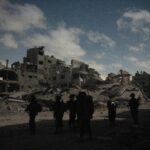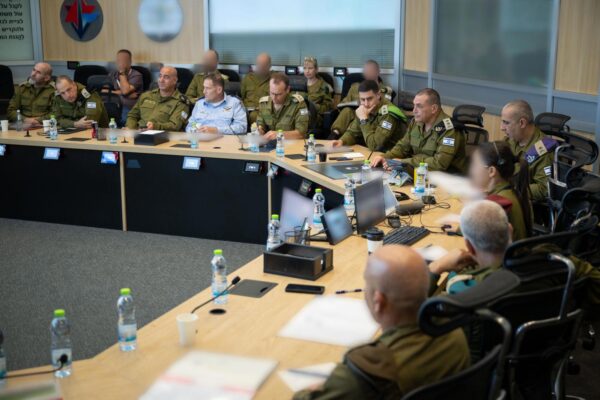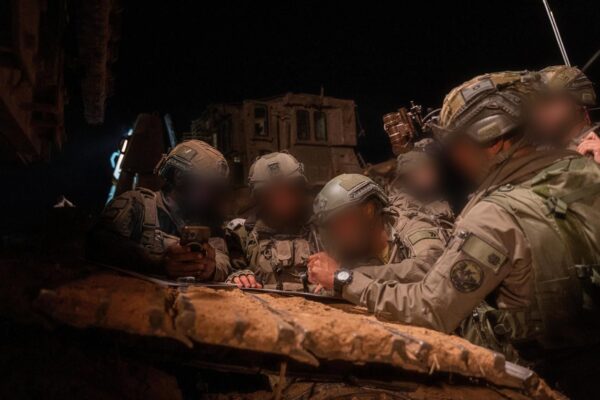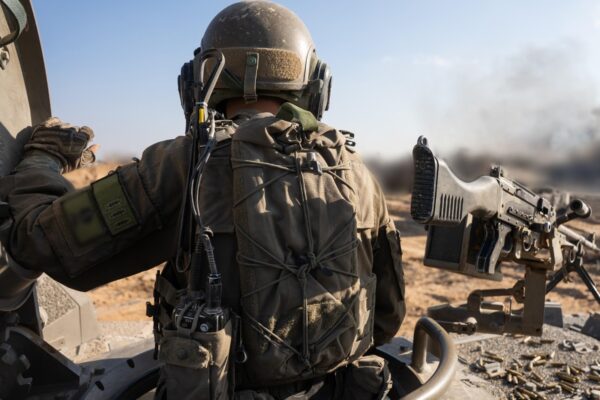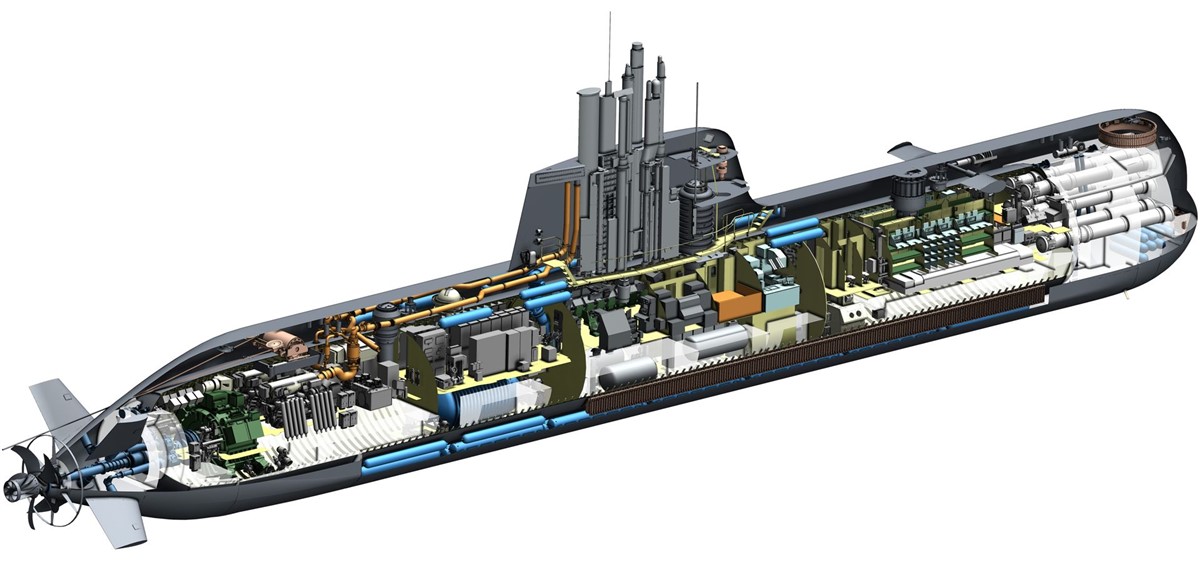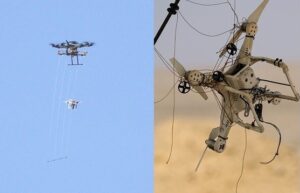Operation Gideon’s Chariots aims to secure full operational control by evacuating civilians, eliminating terrorists, and dismantling Hamas’s command structures and underground infrastructure.
By Yaakov Lappin, JNS
The Israel Defense Forces, led by Southern Command, has embarked on a new phase of the Swords of Iron War in the Gaza Strip, code-named “Operation Gideon’s Chariots.”
It involves five divisions and tens of thousands of mobilized reservists, aimed at dismantling Hamas’s remaining military and governing capabilities and securing the return of Israel’s 58 remaining hostages.
Lt. Col. Nadav Shoshani, the IDF spokesperson to international media, detailed the escalation, initiated following directives from Israel’s political echelon, during a briefing for journalists on Monday.
“This operation, ‘Gideon’s Chariots,’ is a new phase in the Swords of Iron War, and the goals of the war are the same goals,” Shoshani stated.
He defined the objectives as “returning our hostages, currently 58 hostages are remaining in Gaza, and dismantling Hamas’s military and governing capabilities.”
The IDF officially announced the start of Operation Chariots of Gideon on May 18, referring to a large-scale ground operation in multiple areas of the northern and southern Gaza Strip, which followed a week of over 800 artillery and Israeli Air Force preparatory strikes.
As part of this new operation, Shoshani explained that the IDF had been “increasing our operational control on the Gaza Strip and we have been in this process calling the civilian population to distance themselves from the area of combat, giving them a chance to get out of harm’s way for their own safety.”
This was evidenced on May 19, when the IDF Arabic spokesperson issued extensive evacuation warnings for eastern Khan Younis, including the Bani Suheila and Abasan areas, declaring the Khan Younis Governorate a dangerous combat zone and urging residents to move west, to the Al-Mawasi humanitarian zone. Large-scale evacuations from Khan Younis were subsequently observed.
Detailing the operational methodology, Shoshani outlined a structured approach.
“One of our goals in this war…is to encircle Hamas terrorists, to get control of an area, encircle the area, get the civilians out of the combat zone, and fight Hamas when they are encircled. To have a targeted operation against Hamas terrorists to make sure we’re doing everything we can to get the civilians out of harm’s way,” he said.
This is a “pre-planned operation that has different steps and we are moving forward with this step,” Shoshani added.
In the days leading up to and during the initial phase of the operation, the IDF struck heavily to prepare the ground, hitting over 800 Hamas targets in recent days throughout the Gaza Strip in order to prevent them from preparing for attacks against us, and supporting our ground operations,” said Shoshani.
כוחות צה״ל בפיקוד הדרום ממשיכים לפעול בהכוונת אגף המודיעין ושב״כ נגד ארגוני הטרור ברחבי רצועת עזה, להשמיד תשתיות טרור ולחסל מחבלים במסגרת מבצע “מרכבות גדעון”.
כלי טיס של חיל האוויר, בהכוונת כוחות אוגדה 162 תקף וחיסל בצפון רצועת עזה המחבל מחמד שאהין, מחבל נוח׳בה בגדוד מזרח… pic.twitter.com/OuzLKGlfRK
— צבא ההגנה לישראל (@idfonline) May 21, 2025
The IDF reported on Monday striking more than 160 targets across Gaza in the previous 24 hours, including terrorist cells, anti-tank missile launch sites, military buildings, underground infrastructure, and a weapons depot.
Palestinian media reported approximately 50 deaths overnight from May 19 to 20 from IDF strikes, primarily in northern and central Gaza.
Shoshani highlighted specific principles for Operation Gideon’s Chariots, stating:
“One is to achieve operational control in the area where we are operating, to clear that area of civilian population and then to fight those terrorists and then to clear the area of the terror infrastructure both above and below the ground.”
“Second thing, as I said, is to distance the population. This is an effort in itself in our operations, and the main goal is to target Hamas’s command and control systems, to target their commanders, to target their remaining capabilities.”
This focus is critical, Shoshani stressed:
“Because even though we have achieved a lot throughout this war, Hamas still remains [and has] terror capabilities, still remains a threat to Israelis, and still wants to carry out terror attacks. As they’ve said and just this week, they have fired rockets towards Israeli civilians.”
The Golani Brigade destroyed a tunnel in Rafah, the IDF announced on Monday, which was used by terrorists who had killed elite IDF Yahalom combat engineering unit soldiers, Cpt. Noam Ravid and Staff Sgt. Yahli Seror two weeks prior, eliminating another terrorist cell in the action.
In a significant targeted operation on May 19, Ahmed Kamel Sarhan, described as head of special operations for the Popular Resistance Committees’ military wing (Al-Nasser Salah al-Din Brigades), was reportedly killed by an Israeli special force in central Khan Younis, in southern Gaza.
Reports indicated IDF forces, some reportedly disguised as Gazan women, entered his home, leading to a firefight in which Sarhan was killed, and arresting his son and wife. The son was reportedly returned to Gaza later on Monday.
Addressing the humanitarian situation, Shoshani said:
“Last night the political echelon decided upon the entry of aid into Gaza, something of course we recommended. We are committed to addressing the humanitarian needs in Gaza, making sure they are kept at a level that is according to international and our own values and guidelines that we have put on ourselves.”
The decision followed a Security Cabinet decision on May 18 to allow humanitarian aid to enter via Kerem Shalom Crossing. The Coordinator of Government Activities in the Territories (COGAT) confirmed that aid trucks had begun entering the Strip.
The Prime Minister’s Office framed the aid as necessary to allow the offensive to continue and prevent a humanitarian crisis that could halt operations.
Shoshani emphasized the IDF’s long-standing efforts, stating:
“We have provided Gaza with more than 1.7 million tons of aid. We have done multiple polio vaccination campaigns and many different humanitarian campaigns in Gaza. This is after Hamas blew up and fired rockets at humanitarian crossings into Gaza on October 7 and afterwards.”
He added, “We are facing a cynical, brutal terror organization that is looking to take that aid for themselves and we are looking for a solution and we will act and operate to make sure that aid gets to civilians and not to Hamas.”
The IDF spokesperson directly linked the new offensive’s continuation to Hamas’s intransigence on the hostage issue.
“We said in our operations and leading up to this operation that we will broaden our operation as long as Hamas remains entrenched in its position and continues to hold hostages. And we are realizing that statement at the moment,” Shoshani declared.
He quoted IDF Chief of Staff Lt. Eyal Zamir as saying:
“The only thing that will stop us is the release of the hostages. That is… one of our main goals in this operation, and that is the only thing that will stop us from advancing our plans to dismantle Hamas military and governing capabilities.”
Shoshani affirmed that the operation is conducted in full coordination with the IDFs Hostage and Missing Persons Headquarters, with all efforts made to ensure operations do not endanger the hostages.
“Hamas launched this war on October 7. This is a war we didn’t want, but it is our duty to make sure Hamas can never carry out another October 7th. This is why we’re operating in Gaza. This new phase in the operations in Gaza is aimed to defeat Hamas and to release the hostages,” Shoshani concluded.


